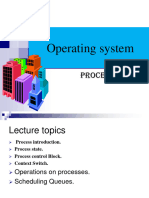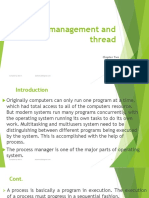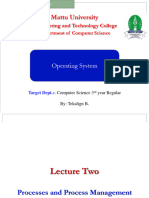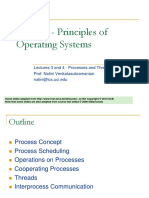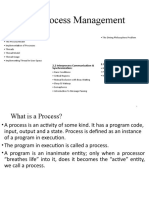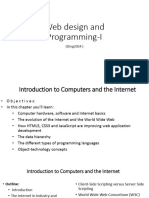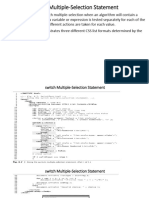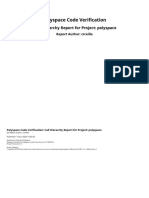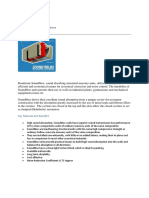0% found this document useful (0 votes)
80 views60 pagesProcess Management in OS
The document discusses processes and threads in operating systems. It defines what a process is, describes process states and creation. It also covers process hierarchies, termination, and how operating systems implement processes using process tables.
Uploaded by
ktesfaneh2Copyright
© © All Rights Reserved
We take content rights seriously. If you suspect this is your content, claim it here.
Available Formats
Download as PDF, TXT or read online on Scribd
0% found this document useful (0 votes)
80 views60 pagesProcess Management in OS
The document discusses processes and threads in operating systems. It defines what a process is, describes process states and creation. It also covers process hierarchies, termination, and how operating systems implement processes using process tables.
Uploaded by
ktesfaneh2Copyright
© © All Rights Reserved
We take content rights seriously. If you suspect this is your content, claim it here.
Available Formats
Download as PDF, TXT or read online on Scribd
/ 60














